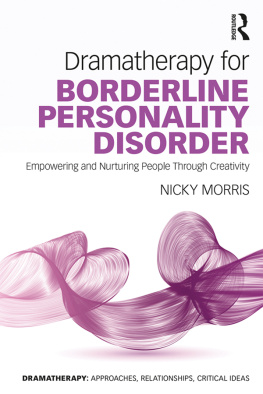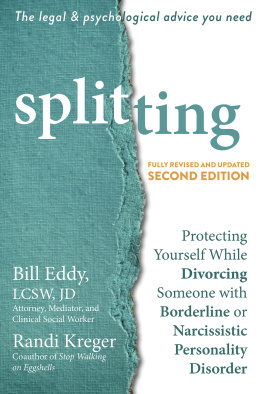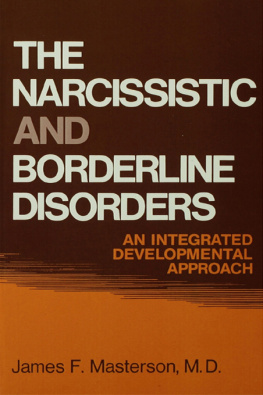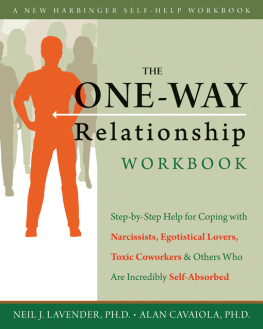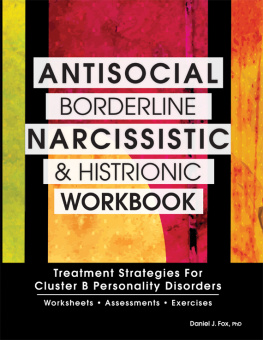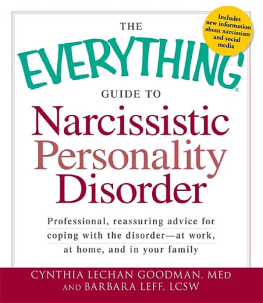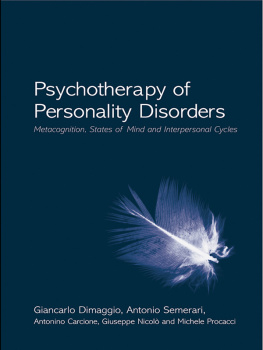i
THE EMPTY CORE
ii
"In this superb book, Dr. Seinfeld begins by offering the reader a brilliant overview of the British object relations school.... He then demonstrates the useful application of the theory of the empty core via vivid and beautifully written case material, case material that is so real that the reader is drawn into the therapeutic process. Here his interpretations are often dazzling in their directness and accuracy, yet these often bold interpretations are always respectful, well timed, and empathic.... It is rare to find a book that combines meticulous scholarship with originality and energy of such a high order. The Empty Core is a brilliant and exciting book."
-Diana Siskind, CSW
"This is an exciting book. Not only is it exciting from the point of giving a clear exposition of object relations theory, but also in terms of the author's ability to use case material to show you how to use the theory. Few books share clinical case material with such freedom, clarity, and instruction. Dr. Seinfeld revolutionizes the way clinical material is listened to and how the clinician responds. He gives the reader a step-by-step description of how he responds to the patient's self states. He enables the reader to understand and speak to the subjective worldview and self states of the patient with interpretations that are completely object relational. He speaks the language of the patient's affective reality, thereby conveying a genuine capacity to understand the unmet relational needs and wishes of the child within the patient."
-Robert S. Berger, MS, CSW
"Jeffrey Seinfeld's The Empty Core is a welcome addition to the current dialogue on the origins and functions of 'emptiness.' He explores the empty core of the schizoid personality, and helps the clinician to see how work with the latter differs from work with the borderline personalities....
"Seinfelds palette includes the British school, Sartre, and Lacan, but also American ego and self psychologies. His writing is not polemical or divisive. He shows how different schools relate to his concerns, and he does this very well. The Independent British school of psychoanalysis is his home base and main source of his insights. What is especially important is his emphasis on Fairbairn, whose work has not received the attention it deserves in this country. Seinfeld helps redress this wrong and shows the importance of Fairbairn's understanding of schizoid phenomena for clinical work today....
"Seinfeld gives many clinical illustrations in a clearly written way, so that the mental health workers can follow what he does in a step-by-step fashion, and apply his work to their own cases.... The book brims with useful clinical hints."
-Michael Eigen, Ph.D.
iii
THE EMPTY CORE
An Object Relations Approach to Psychotherapy of the Schizoid Personality
JEFFREY SEINFELD, PH.D.
JASON ARONSON INC.
Northvale, New Jersey
London
iv
Production Editor: Bernard F. Horan
Editorial Director: Muriel Jorgensen
This book was set in 12 point Bern by Lind Graphics of Upper Saddle River, New Jersey,
and printed and bound by Haddon Craftsmen of Scranton, Pennsylvania.
Copyright 1991 by Jason Aronson Inc.
10 9 8 7 6 5 4 3 2 1
All rights reserved. Printed in the United States of America. No part of this book may be used or reproduced in any manner whatsoever without written permission from Jason Aronson Inc. except in the case of brief quotations in reviews for inclusion in a magazine, newspaper, or broadcast.
Library of Congress Cataloging-in-Publication Data
Seinfeld, Jeffrey.
The empty core : an object relations approach to psychotherapy of the schizoid personality / Jeffrey Seinfeld.
p. cm.
Includes bibliographical references and index.
ISBN 0-87668-611-0
1. Schizophrenia-Treatment. 2. Object relations (Psychoanalysis)
3. Psychotherapy. I. Title.
[DNLM: 1. Psychotherapy. 2. Schizoid Personality Disorder.
3. Schizoid Personality Disorder-therapy. WM 203 S461e]
RC514.S424 1991
616.89'80651--dc20
DNLM/DLC
for Library of Congress 90-14534
Manufactured in the United States of America. Jason Aronson Inc. offers books and cassettes. For information and catalog write to Jason Aronson Inc., 230
Livingston Street, Northvale, New Jersey 07647.
v
Dedicated to my mother
and the memory of my father
vi
vii
Contents
Preface ix
Acknowledgement xiii
A Framework for the Empty Core 1
Captured in the Reflection of the Mirror 27
Direct Interpretation of a Schizoid Obsession 51
Dissociation in Multiple Self States 75
Acting Out, Addictions, and Compulsions in Schizoid States 93
The Tragic Case of Ellen West 113
viii
Confrontation of the Schizoid Patient 141
Treatment of Schizoid States in Children 175
Apathy, Love, and Hate in the Countertransference 193
The Long-term Treatment of the Schizoid Patient 213
References 245
Index 251
ix
Preface
Psychoanalytic contributions in America have focused much attention upon the borderline and narcissistic personality disorders. This important emphasis has been at the expense of the third severe personality disorder, the schizoid condition. The relative neglect of the schizoid disorder is surprising, given that in the literature, this condition is considered the most common of the serious personality disorders. In fact, in British object relations theory, the schizoid position is the core of the personality structure, and schizoid states are present and fundamental in all psychopathology.
In his original and outstanding work, W. R. D. Fairbairn, one of the pioneering founders of object relations theory, presented much of what is known about schizoid states. He asserted that schizoid patients, by the experience of early rejection, had been made afraid to love. Schizoid patients are usually thought to be visibly withdrawn, affectively isolated, marginally functional, and behaviorally eccentric. However, these patients may sometimes be misdiagnosed because they do not fit the typical description of withdrawal from interper-
x
sonal relations and social situations. Schizoid patients may role-play at relationships and social involvement, relating in accord with a stereotyped idea of how to behave as a wife, husband, lover, friend, or colleague without genuine emotional involvement. Furthermore, seemingly neurotic, narcissistic, or borderline patients may suffer from an underlying schizoid core. The treatment of these patients can reach an impasse because the therapeutic interventions appropriate for other personality disorders may be ineffective in the treatment of schizoid phenomena.
This book is first and foremost a clinical approach to psychotherapy of the schizoid states; in addition, the idea of the empty core as a framework for the schizoid position is introduced. There is a discussion of differential diagnosis with the borderline condition, and clinical vignettes illustrate how the therapist responds to the schizoid false self, with detailed discussion of interventions addressed to antisocial behavior and the fear of engulfment. The book shows how the therapist may relate playfully to the patient's use of transitional objects and how to "hold" the patient through therapeutic regression.
In treatment, the schizoid patient typically creates an invisible wall between himself and the therapist. This emotional distance protects him from establishing dependence upon a human object relationship. The schizoid person experiences his object relationship needs as insatiable, destructive, even vampirish. Thus, to shield himself and the therapist, he painfully swallows his object hunger. However, the warding off of relational needs increases their intensity and urgency. The schizoid patient does not accept the therapist's empathy because his sense of self is so fragile and vulnerable that any contact is dreaded as an impingement on this secret self.
Next page

